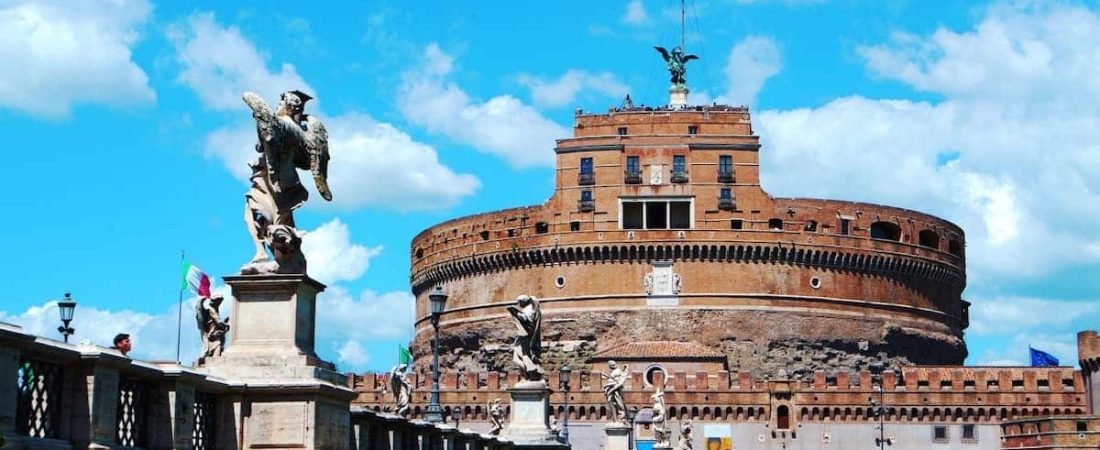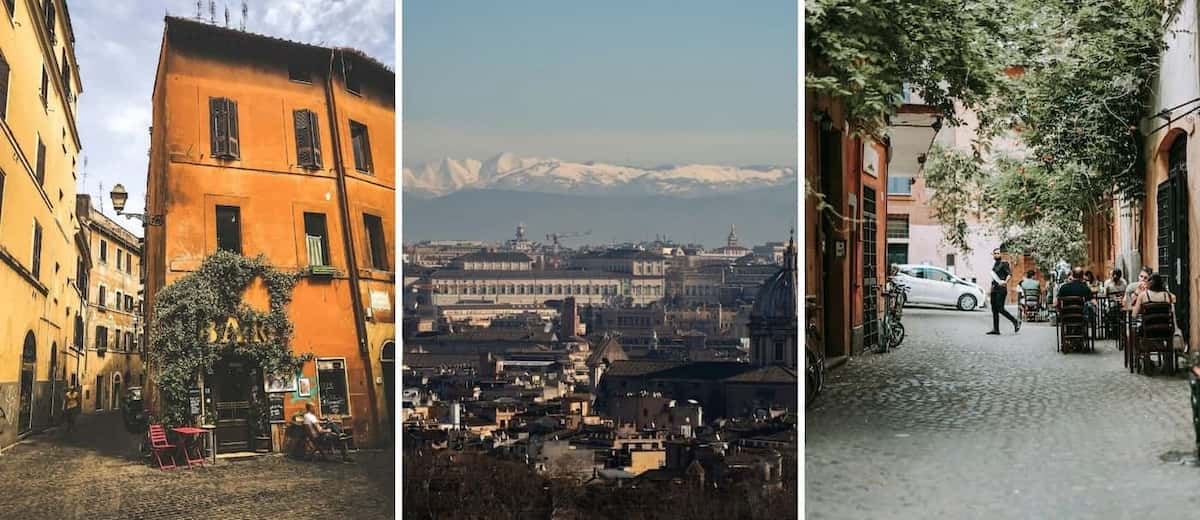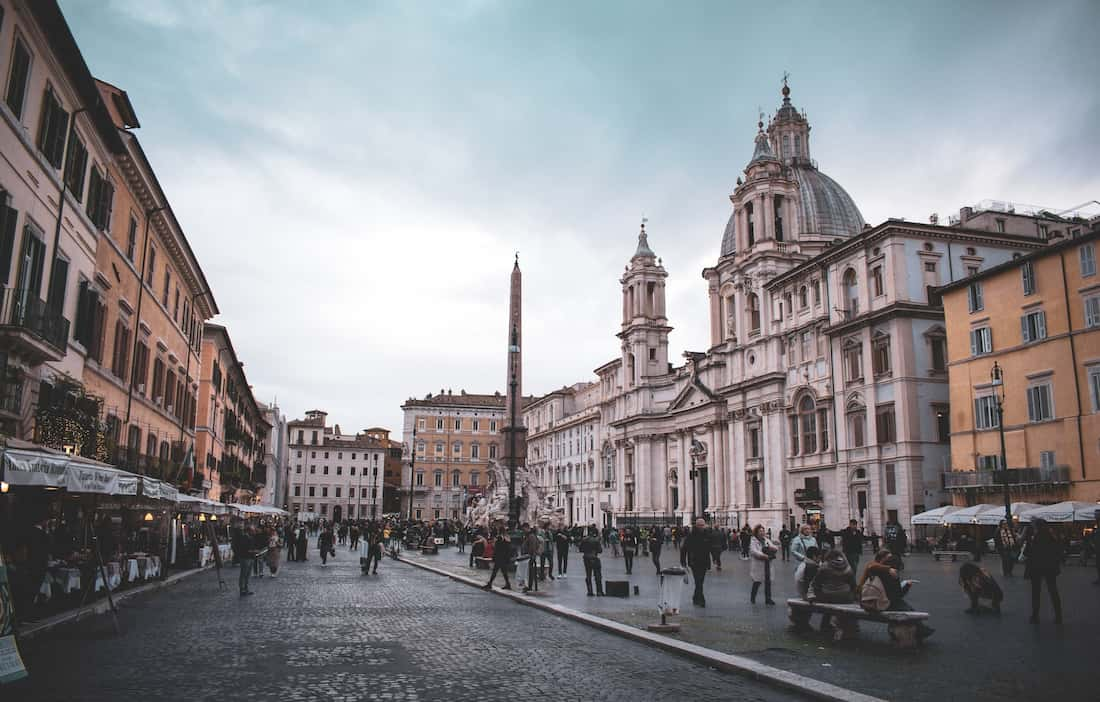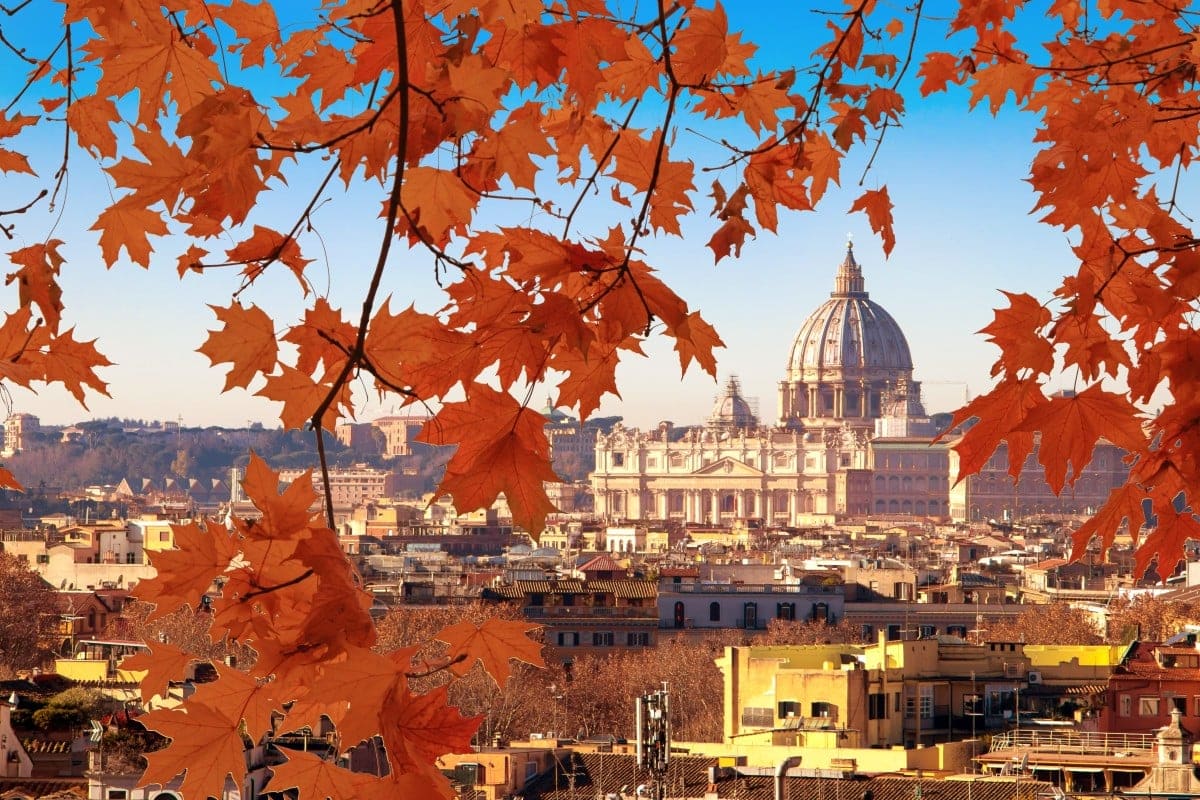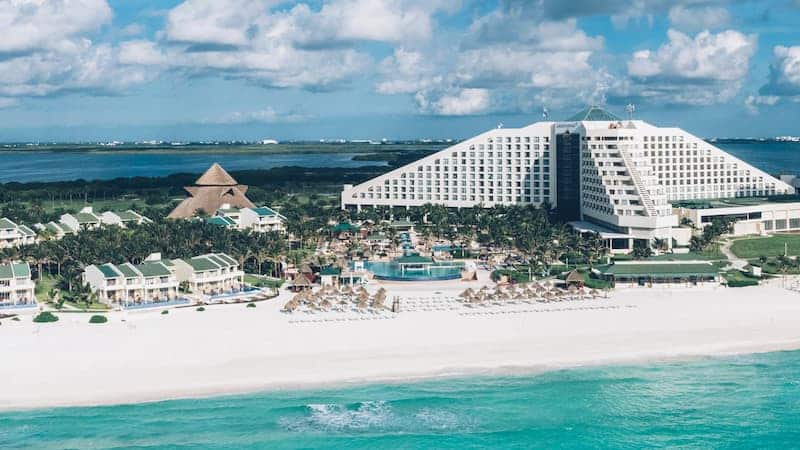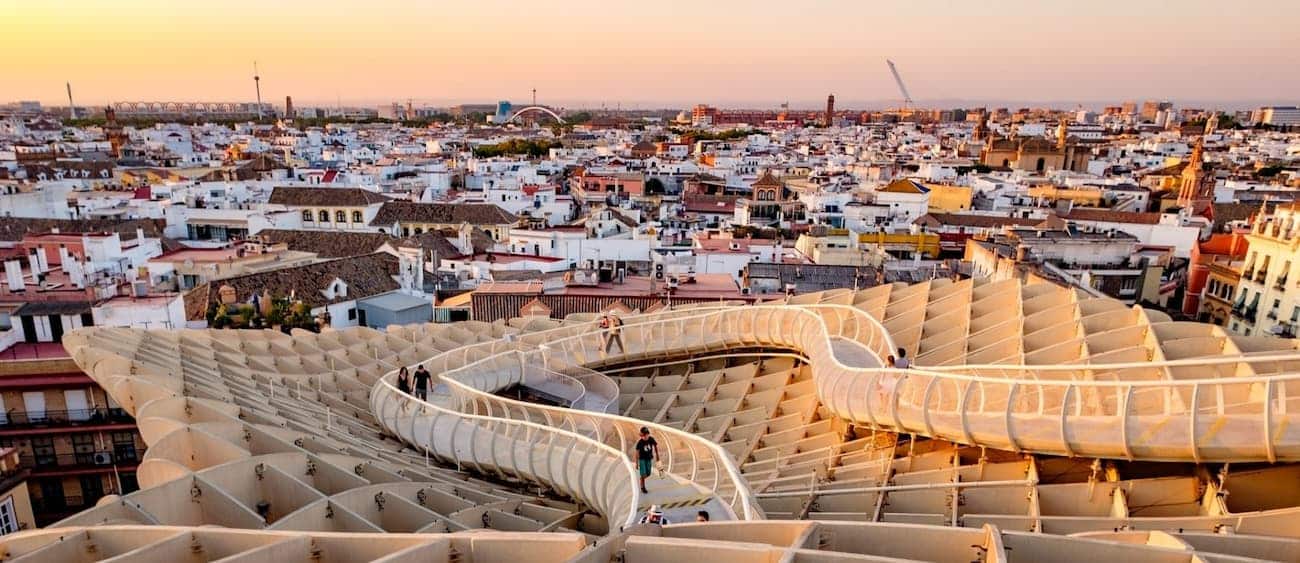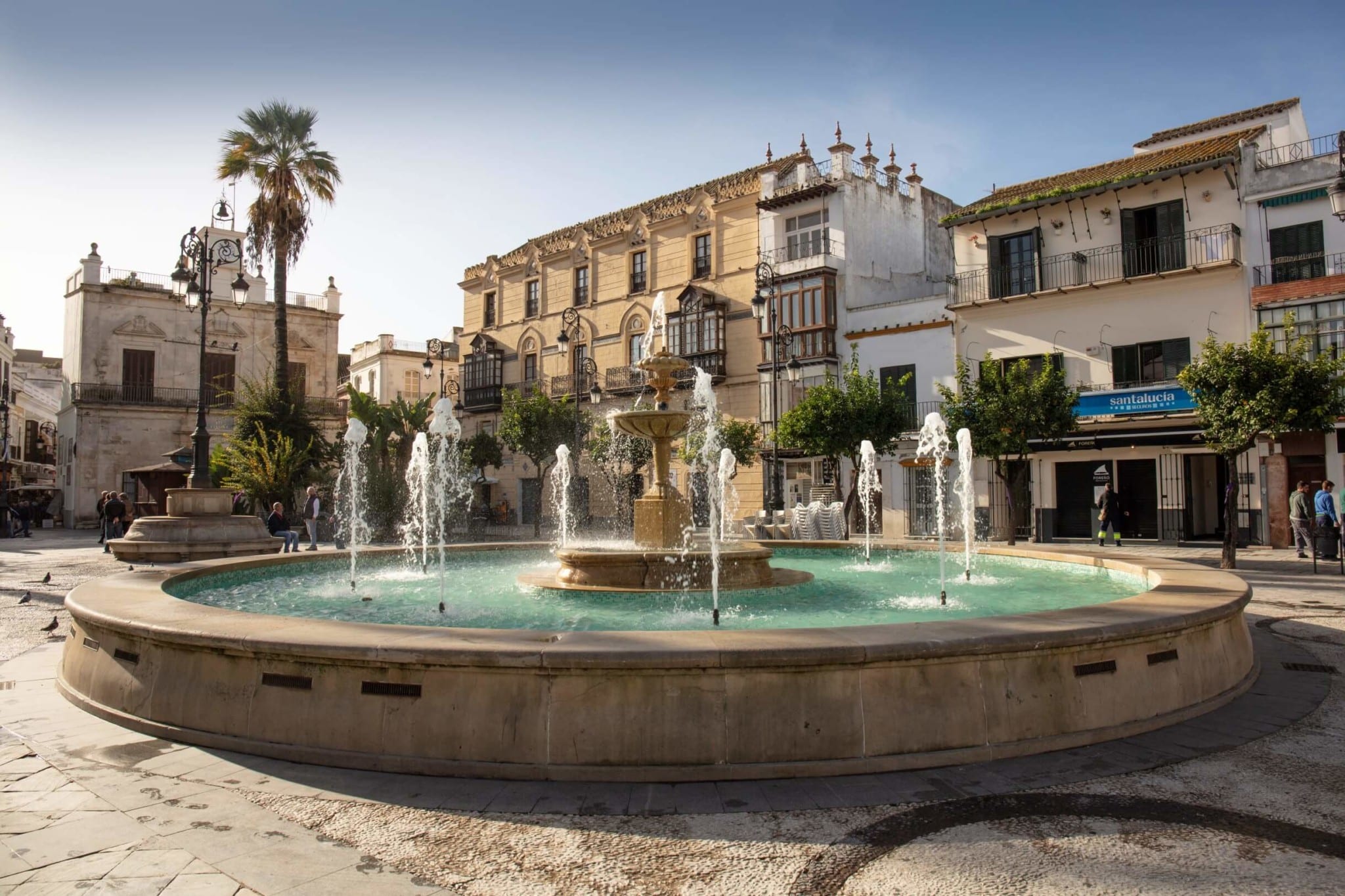The Castel Sant’Angelo is one of the most characteristic places in the city of Rome. In fact, it is nothing more and nothing less than one of the few buildings in the Italian capital that has witnessed what happened over the last almost two thousand years. It was built shortly after the first century of our era and although it has undergone modifications over time, today it shows us a bit of what life was like in those times.
Rome is one of the most popular cities in the world, chosen year after year by tourists from different parts of the planet who want to see everything it has to offer first-hand. It is one of those places where time seems to have stopped and where history can be observed as if it were present time. Not for nothing is it known as the “ Eternal City “, or “Eternal City”, and of course, one of the elements that make it up is this incredible castle.
In a city that has as much to offer as it is Rome, it is easy to get lost in front of so much information and so many places to visit, and sometimes when everything is much better it is to go by parts. For this reason, taking into account that Castel Sant’Angelo is one of the places in the Italian capital that you cannot miss, here we tell you a little about its history, everything it has to offer today and, last but not least, how to get there.
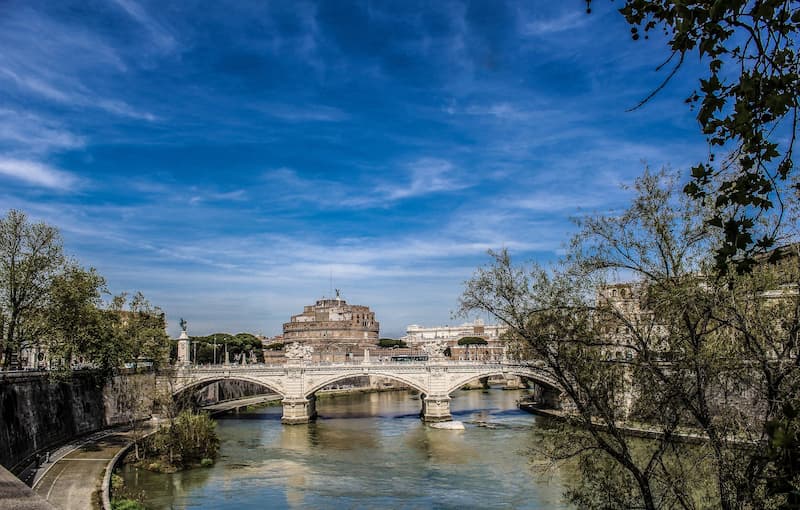
In this way, we hope that when you get to know this amazing place you can see them from another place, learning their history but as if you were part of it.
The history of Castel Sant’Angelo
To talk about Castel Sant’Angelo, or Castel Sant’Angelo, it is necessary to go back to its beginnings, that is, to the 20th century AD. In the year 123 of our era, Emperor Hadrian requested the construction of a mausoleum for him and his entire family, but there was a problem and that is that he died in the year 138 and the construction did not it was finished until the following year.
Hadrian had made the order for the mausoleum to the architect Demetriano, inspired by the model of the Augustus mausoleum, although this would be larger. Meanwhile, in the year 139 it was Antonio Pío who finished the construction. Something important to keep in mind about this space is that, although initially its purpose was to be a mausoleum for the imperial family, with the passage of time its role changed. Throughout the history this site has been a defensive fortress, a prison, a Renaissance residence, a museum, and a venue where social and cultural events are held.
From the year 403 its status as a mausoleum changed and it became a fortress, integrating the city’s defense system. In any case, it was not until the year 590 that it received the name it currently bears. As the story goes, Pope Gregory I had a vision of the Archangel Michael on top of Hadrian’s mausoleum and from there he became known as Castel Sant’Angelo, or Castel Sant’Angelo. In addition, a church was built at the top and several years later, in the 13th century, a statue was built showing an angel sheathing a sword.
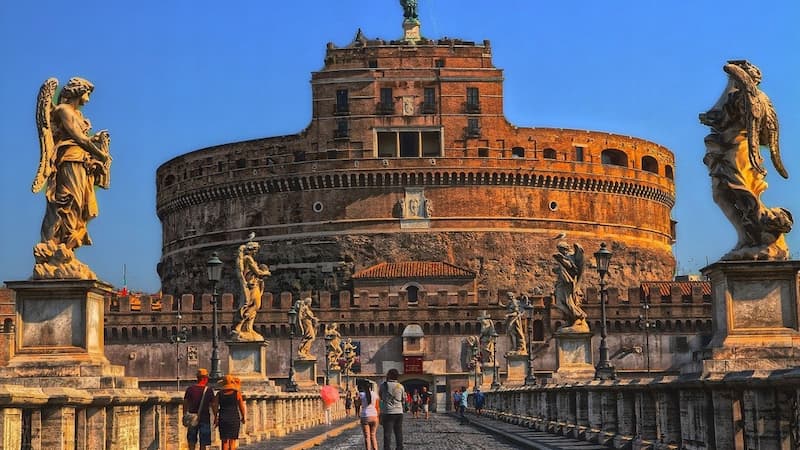
Castel Sant’Angelo became a key site for the care of the city, and n the 11th century it became the state prison and from then on it passed through various noble families. Towards the 15th century the modifications began, changing the structure and turning it into a much more impenetrable fortress. At that time it also became the Mint and Secret Archives.
Little by little, life inside the fortress became the life of a palace, in fact in the middle of the 16th century the residential sector was expanded. Despite this, n the 19th century it was once again used as a prison and it was in 1906 when it became a museum o. In February of that year it was inaugurated as the Museum of Military Engineering and, later, in 1925, it officially became the National Museum of Castel Sant’Angelo, or Museo Nazionale di Castel Sant’Angelo.
Castillo Sant’Angelo today
The Castel Sant’Angelo, nowadays a museum, has several sectors that are open to the public and that can be visited. It is divided into different floors, it still preserves the cells where important characters in history were locked up, and it has a view of the city that is incredible. Year after year it is usually visited by almost 7.1 million tourists
It is important to remember that initially the castle was built in order to be a mausoleum for Emperor Hadrian and his entire family. In fact, it was around this that the construction was expanded. Thus, it has a space known as the Chamber of Ashes, there is the urn that contains Hadrian’s remains, as well as that of Sabina, his wife, and that of Lucio Aeolio, the emperor’s first adopted son.
The Castel Sant’Angelo today is 89 meters wide, with five exhibition floors and all of them are connected with a helical ramp, or in the form of a spiral. In the tour of the building you can see the rooms decorated with the frescoes that still remain and the collection of weapons. There you can also see all the works of art and statues that are inside, as well as the Papal Apartments.
In terms of works of art, the Castel Sant’Angelo has a large collection that has been increasing over time and whose pieces can be observed by the public who visits it. There are also some frescoes and other works that were donated by private collectors. One of the most important pieces of the castle is the one on the roof, as it is the famous sculpture of the Archangel Michael.
Something that is worth noting about Castel Sant’Angelo is that if you access the terrace, you will be able to appreciate one of the best views of the city of Rome.
Sant’Angelo Bridge
The Sant’Angelo Bridge, originally known as the Elio Bridge, is currently an exclusively pedestrian bridge and was built by Emperor Hadrian to extend the city center to his mausoleum. From here you get an unrivaled view of the castle.
This building crosses the Tiber River and has five arches. In the 16th century, at the request of Pope Clement II, statues of Saints Peter and Paul were added to the bridge, and years later ten more statues were added by Gian Lorenzo Bernini. Five of them on each side of the bridge and, not a minor detail, are statues of angels and each one of them has an emblem of the death and suffering of Jesus.
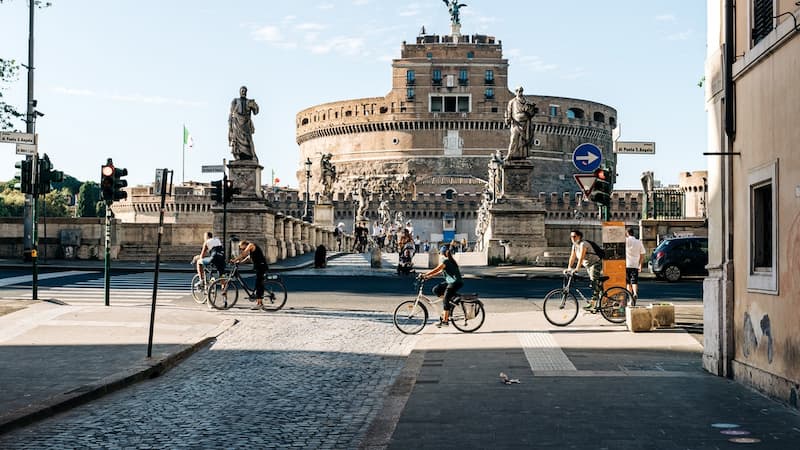
Historically, this bridge was also used by those who wanted to get to St. Peter’s Basilica, after the destruction of the Nero Bridge, that is why it was also known as “St. Peter’s Bridge”.
Passetto di Borgo
The Passetto di Borgo, better known as plain Passetto, is a passage that connects the Vatican City with Castel Sant’Angelo. It has, approximately, about 800 meters long, 3.5 wide and about 14 meters high.
This passageway was built in 1277 by Pope Nicholas II, and more than once it has been used for popes who were in danger to escape there. In addition, a fact that is not minor, this Passetto has another corridor on the interior side, which is exactly the same but is closed and which the public cannot access.
Although it was in disuse for several years, since November 1999 the Passetto can be visited by those who come to see Castel Sant’Angelo.
How to get there and visit Castel Sant’Angelo
Sant’Angelo Castle is located on the banks of the Tiber River, the third longest in Italy, very close to the Vatican City, and fortunately it can be reached in several ways using public transport. For those who want to get there by bus, there are several lines that can take them there and at different stops, and something similar, although with fewer options, happens with the metro.
The castle is located in calle Lungotevere Castello, 50, and the lines that go there are the following:
- bus: Piazza Pia stop (the one closest to the castle), lines 40, 62, 23, 271, 982 and 280; Via di Porta Castello stop, line 34; Piazza Cavour stop, lines 49, 87, 926, 990; and Santo Spirito stop, lines 64 and 46.
- metro: line A, Lepanto stop and Ottaviano – San Pietro stop.
Now that you have all the information available on how to get there, you have to take into account the days and times that you can visit this historic site.
Schedules
The Castel Sant’Angelo can be visited from Tuesday to Sunday, from nine in the morning until 19:30, although it must be taken into account that the last entry can be made an hour before of the closing, that is to say at 18:30. On the other hand, guided tours are carried out in periods of an hour and a half, the first starting at the moment of opening and the last at 18:00.
In addition to being closed on Mondays, the institution also takes December 25, January 1 and May 1 as rest days. It should be noted that admission to the museum is paid, although every first Sunday of each month you can enter for free.
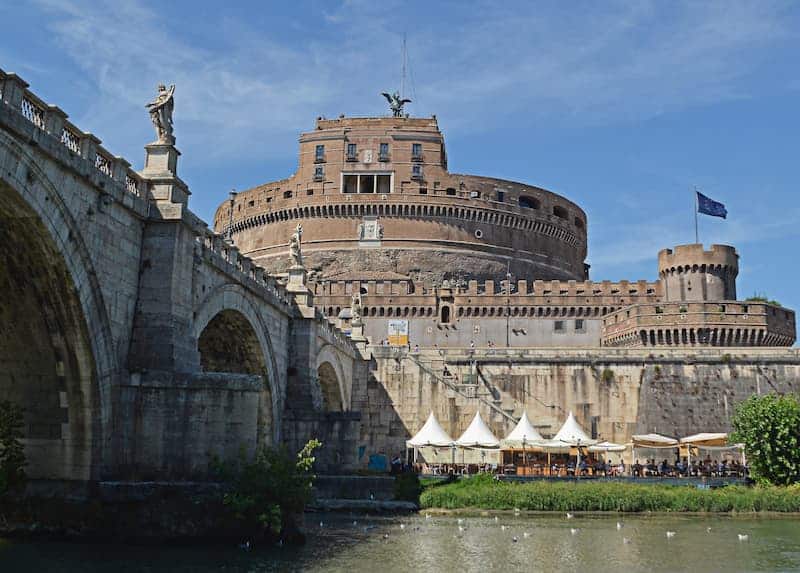
Castel Sant’Angelo is one of the oldest buildings in the city of Rome, witness to some of the most important moments and stages in Western history, and undoubtedly one of the places in the Eternal City that is worth visiting.
